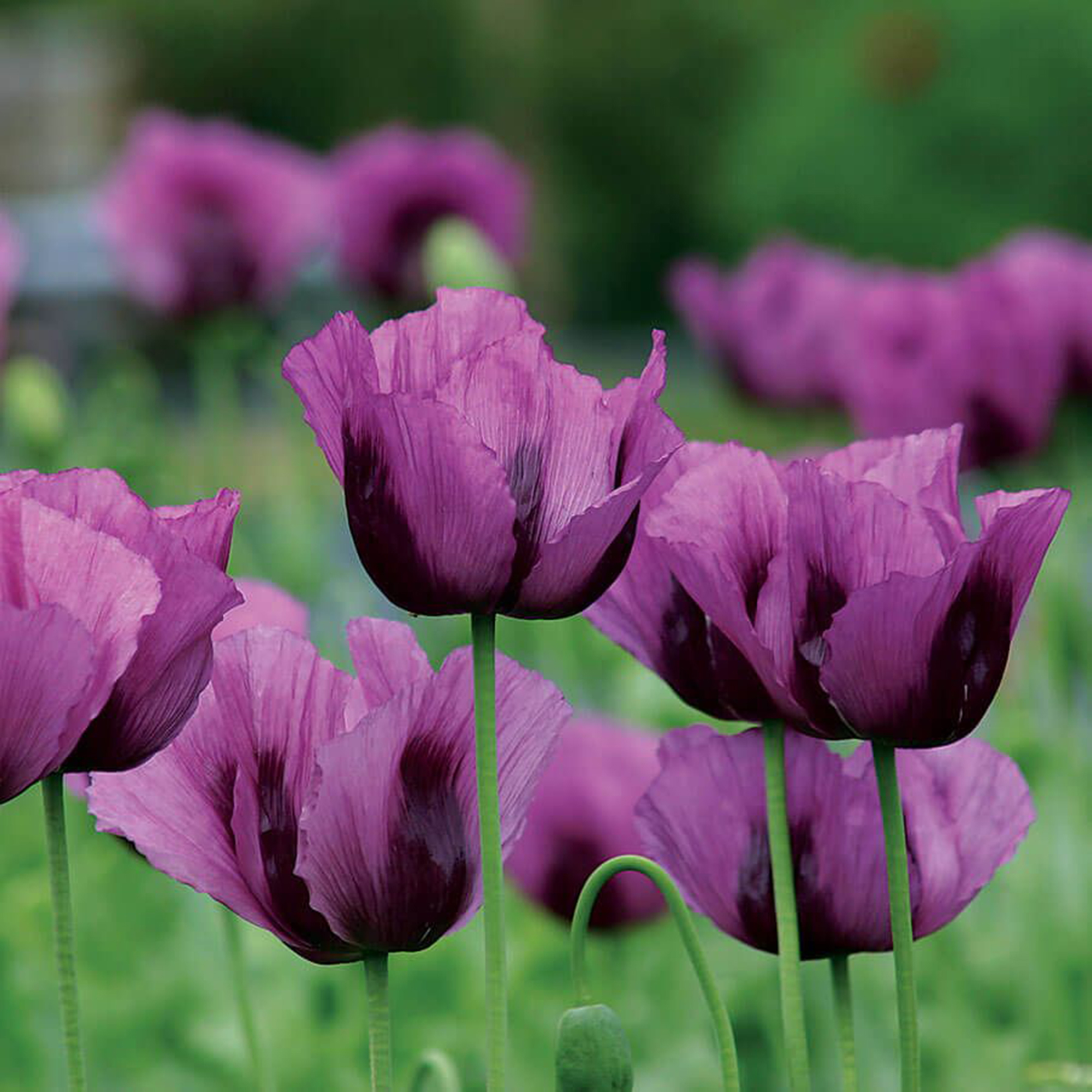7 Flower Seeds To Sow In September For The Most Glorious Blooms Next Year
Discover the best annual and perennial flowers to plant in September, and reap the rewards next spring and summer.


Summer may be nearing its end, but September is the ideal time to plant seeds of many hardy annual and perennial flowers that will fill out beds and pots next year.
As a transitional month, September offers just enough warmth for seeds that need to be sown in late summer yet is cool enough for many fall sowings.
This article reveals some of the best flowers to plant in September. However, most of the flowers to plant in August can also be planted this month.
Many hardy flowers can be planted in almost any USDA hardiness zone, but check compatibility before sowing, as well as your soil type and required light levels.
Some seeds can be sown directly where you want the plants to grow, while others will need to be started indoors, or sheltered in a cold frame or greenhouse over winter.
Most of these flowers can also be sown in the spring, but act now and you will be rewarded with larger, healthier plants and more glorious blooms.
1. Cornflowers
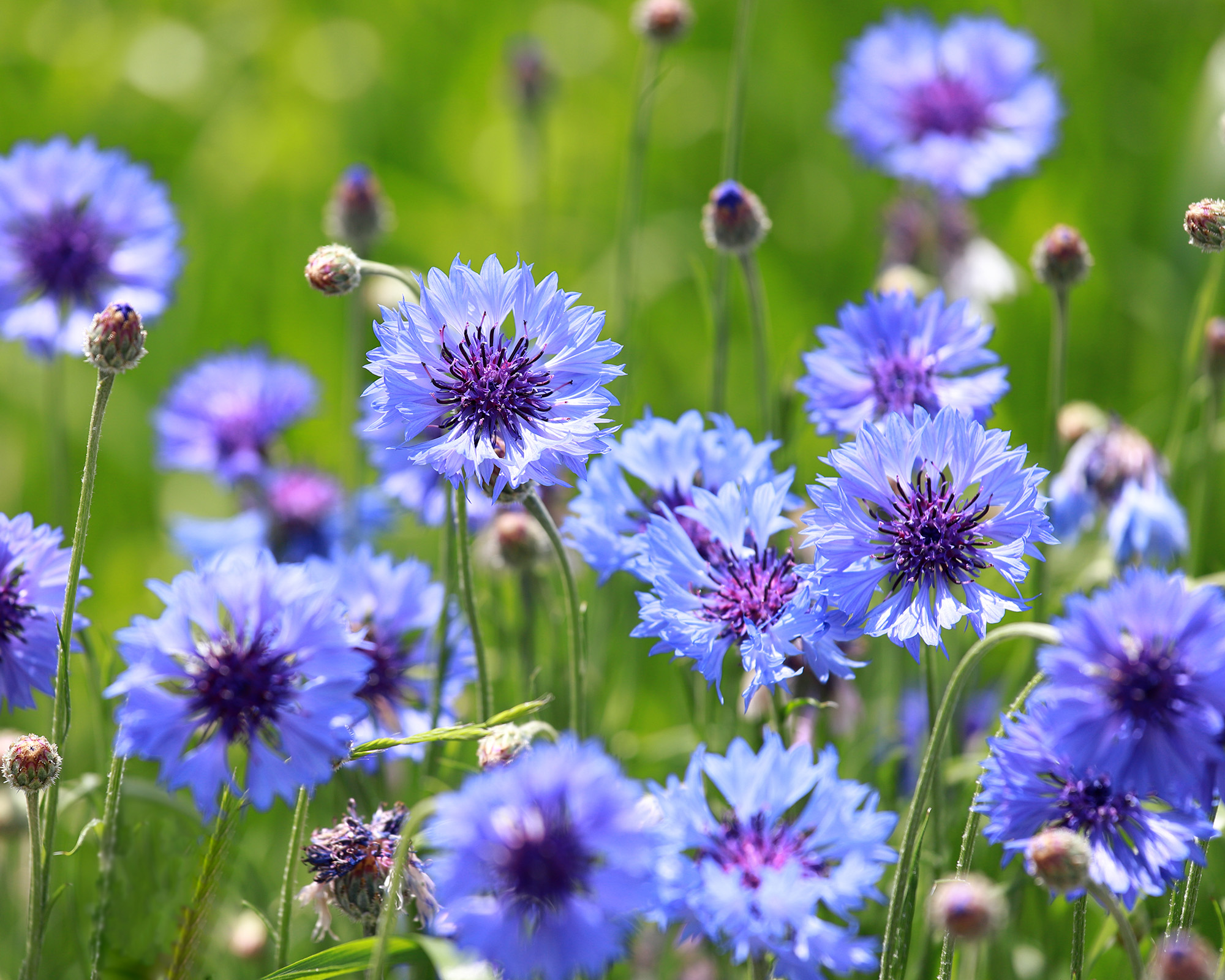
While most “blue” flowers are in fact a shade of purple, cornflowers (Centaurea cyanus) – or bachelor buttons – are true blue beauties. Their delicate blooms belie their hardy nature, as plants require little care or watering, and thrive in even poor soil. They can be grown in USDA zones 2-11.
Sign up for the Gardening Know How newsletter today and receive a free copy of our e-book "How to Grow Delicious Tomatoes".
Cornflowers are annuals and can be sown in the spring for a summer flowering, or in September for a slightly earlier appearance.
Direct sow seed where plants will receive full sun for at least 6 hours a day – some afternoon shade is beneficial in warmer climates. Enrich the soil with compost or fertilizer at planting, and water in periods of drought.
2. Scabiosa
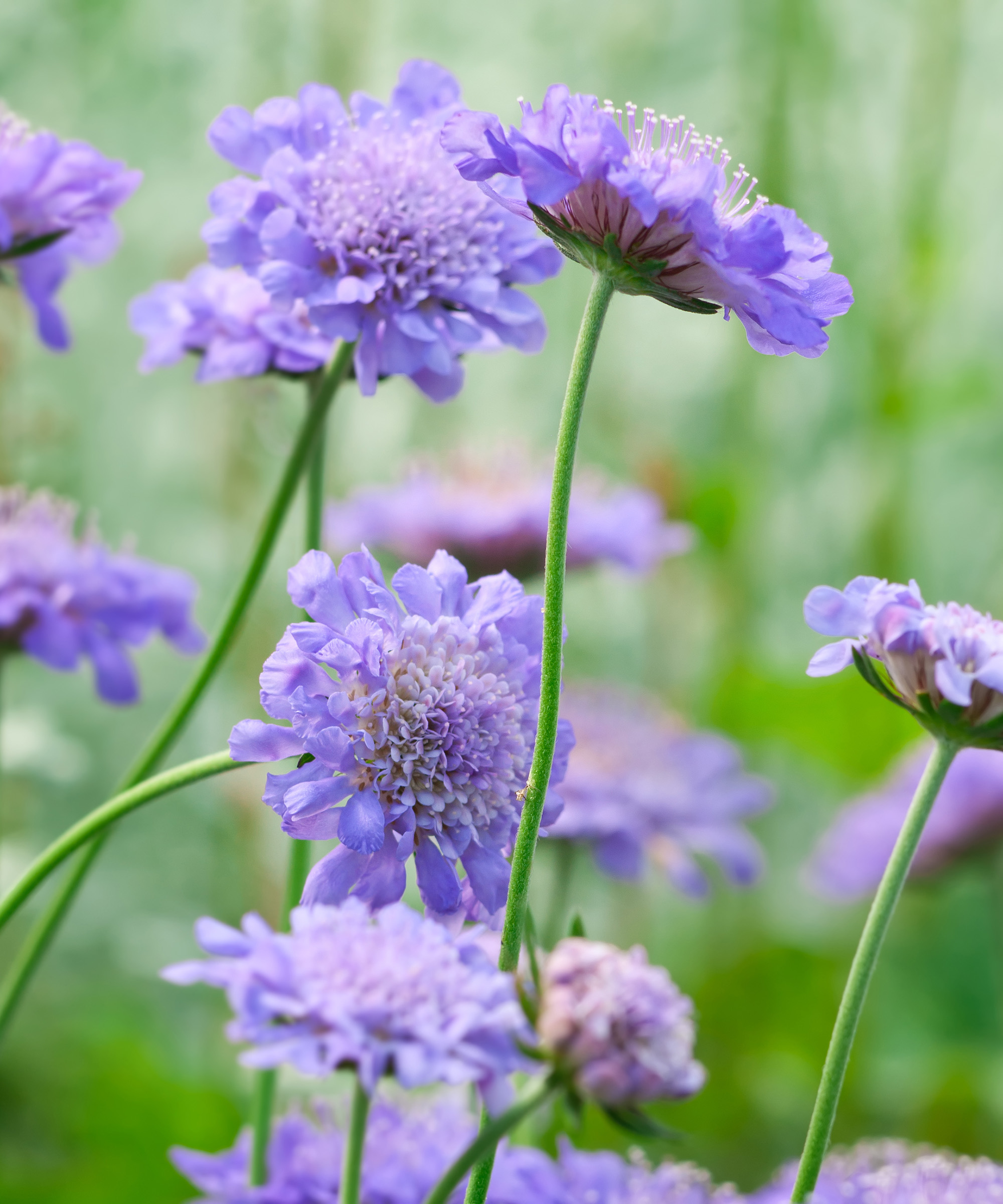
Scabiosa – or pincushion flowers – are a delight in the garden and are a magnet for butterflies. With an extensive bloom period and long stems, they are perfect for cutting garden flowers. They can be annual or perennial, and thrive in USDA zones 3 to 7.
Sow scabiosa seeds in September or October undercover, then plant out in spring, for flowers all summer long. Alternatively, they can be direct sown in the spring.
Apart from occasional watering in dry weather, scabiosa require minimal care. Position them in full sun, although the plants will tolerate partial shade. Deadhead to prolong bloom times.
3. Douglas Meadowfoam
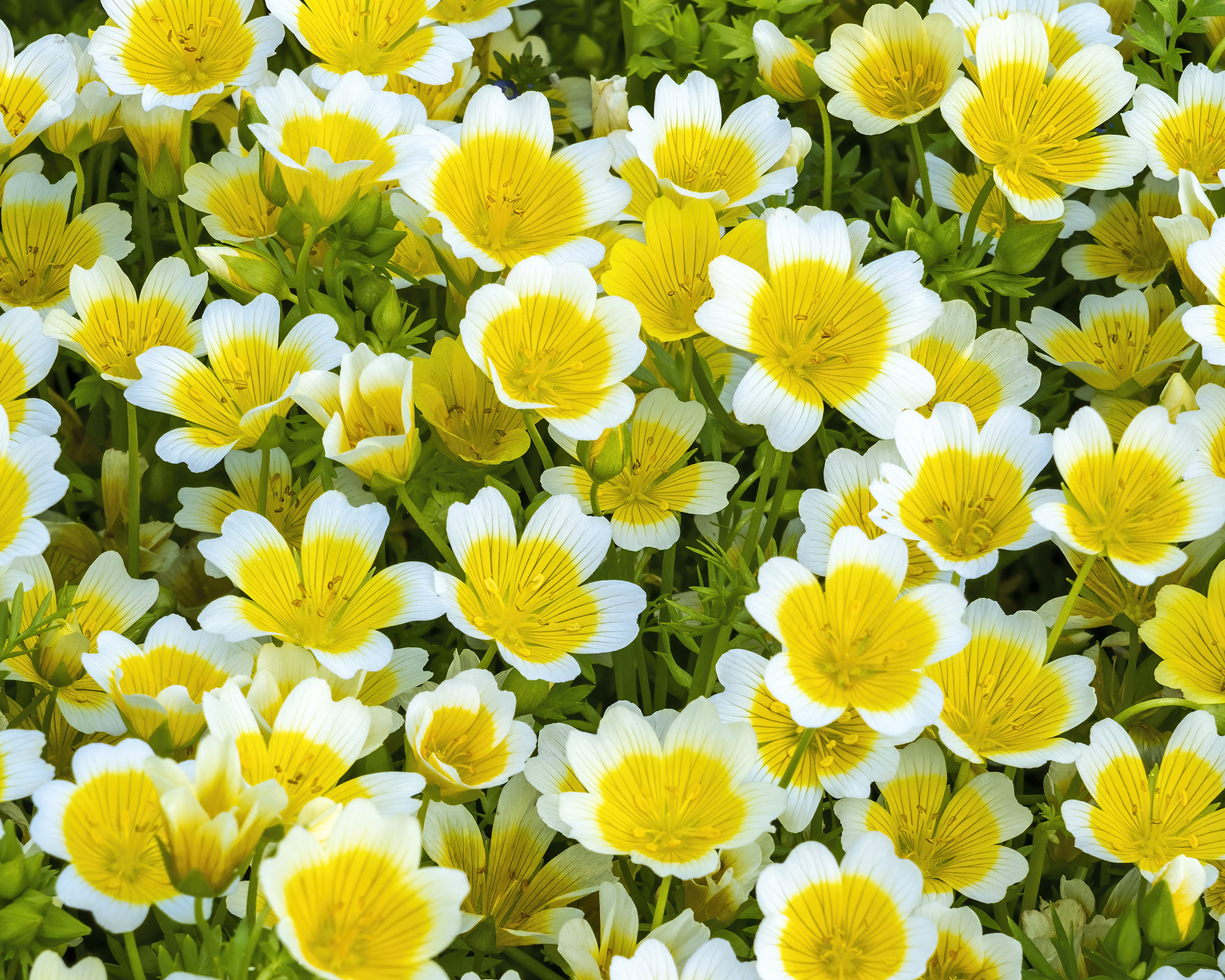
Native to Oregon and California, Douglas meadowfoam (Limnanthes douglasii) is affectionately known as the poached egg plant due to its yellow-centered white flowers. It is highly attractive to pollinators and makes a fantastic edging or groundcover plant, as it reaches just 6 inches (15cm) in height. It’s hardy in zones 4-8.
Sow seeds indoors in the autumn, and plant out in the spring. Douglas meadowfoam thrives in loose well-draining soil in a sunny spot. Water in periods of dry weather.
Poached egg plants will self-sow and naturalize in gardens, but they are excellent at suppressing weeds.
4. Cerinthe

An attractive herb with purple-blue flowers, cerinthe – or blue shrimp plant – adds a vibrant accent to beds and pots in USDA zones 7 to 10. Beloved by pollinators, it is also one of the more unusual cutting garden flowers and makes a stunning addition to floral arrangements.
The flowers themselves are small but appear larger due to the bluish bracts. Both the leaves and flowers are edible, and impart a fresh, slightly honey-like flavor to dishes.
Sow seeds indoors in September or October, and plant out in the spring. Plants need well-drained soil, full to partial sun, and watering in dry weather.
Flowers grow up to 4 feet (1m) tall and benefit from staking – add these when planting out to avoid damage.
5. White Lace Flower

White lace flower – or Orlaya grandiflora – features frothy flowers reminiscent of the ever-popular lacecap hydrangea. They are attractive to pollinators and make superb long-lasting cut flowers.
Hardy annuals, white lace flowers span USDA hardiness zones 2-11. They can be sown in spring or fall, but a September or October sowing – before the frosts hit – will produce bigger plants.
White lace flowers are forgiving, low-maintenance plants that can thrive in partial shade or full sun. They will perform best in rich, well-draining soil, but can also tolerate poor soil.
6. Nigella
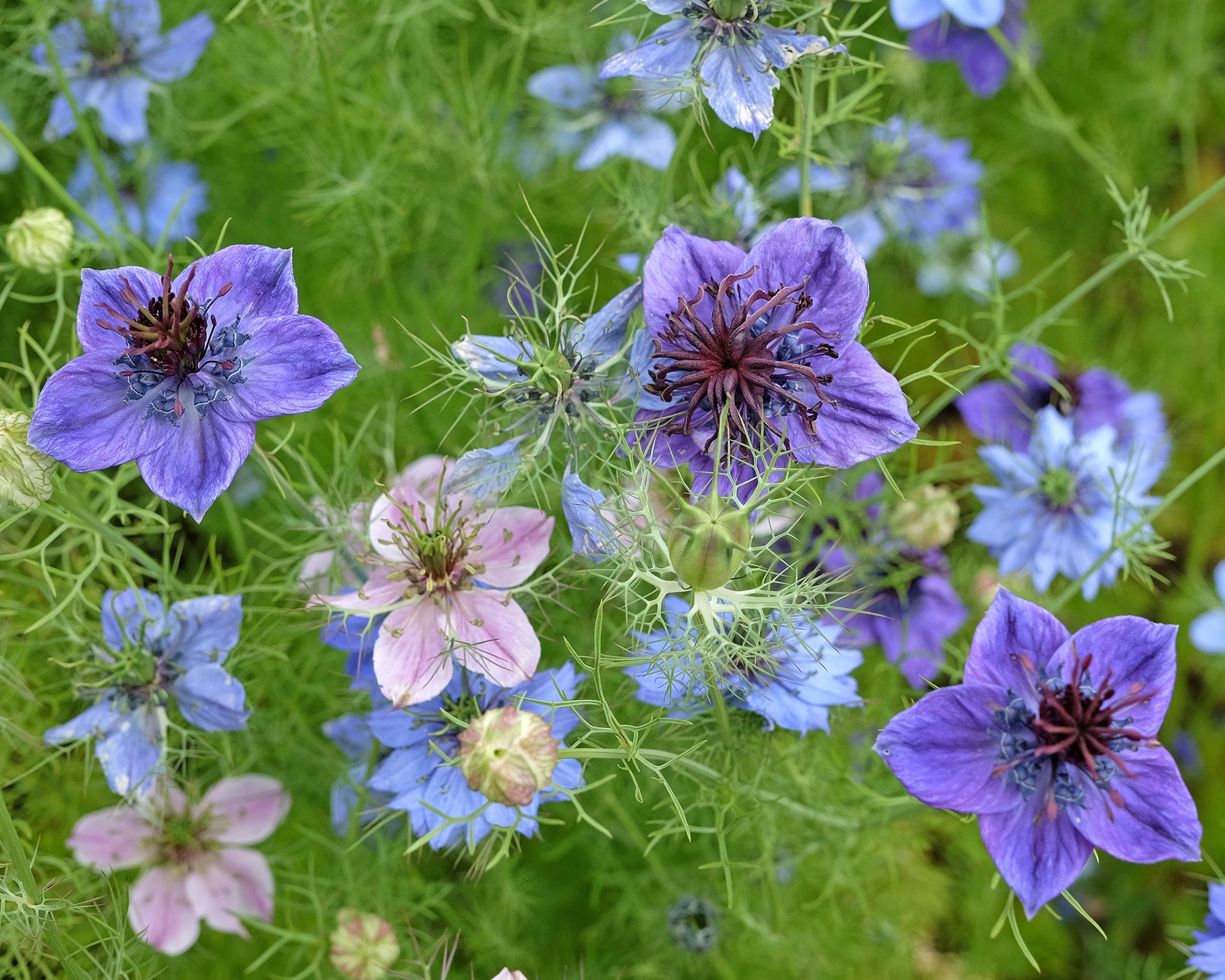
Nigella – or the more romantic “love in a mist” – is a hardy annual that blooms in spring when planted in September. It can be grown in USDA zones 2 to 11.
Double flowers in shades of blue, pink, and white are glimpsed through the “ruff” leaf structure, which gives the appearance of the flowers being surrounded by mist.
Growing nigella is straightforward: sow seeds in a sunny spot into well-draining but fertile soil. Water in dry periods.
It’s a good idea to succession sow nigella, as the plants have a short flowering time. When blooms fade, they develop attractive seed pots that can be used in flower arrangements. Don’t forget to harvest the edible seeds, which are delicious in curries and breads.
7. Sea Holly
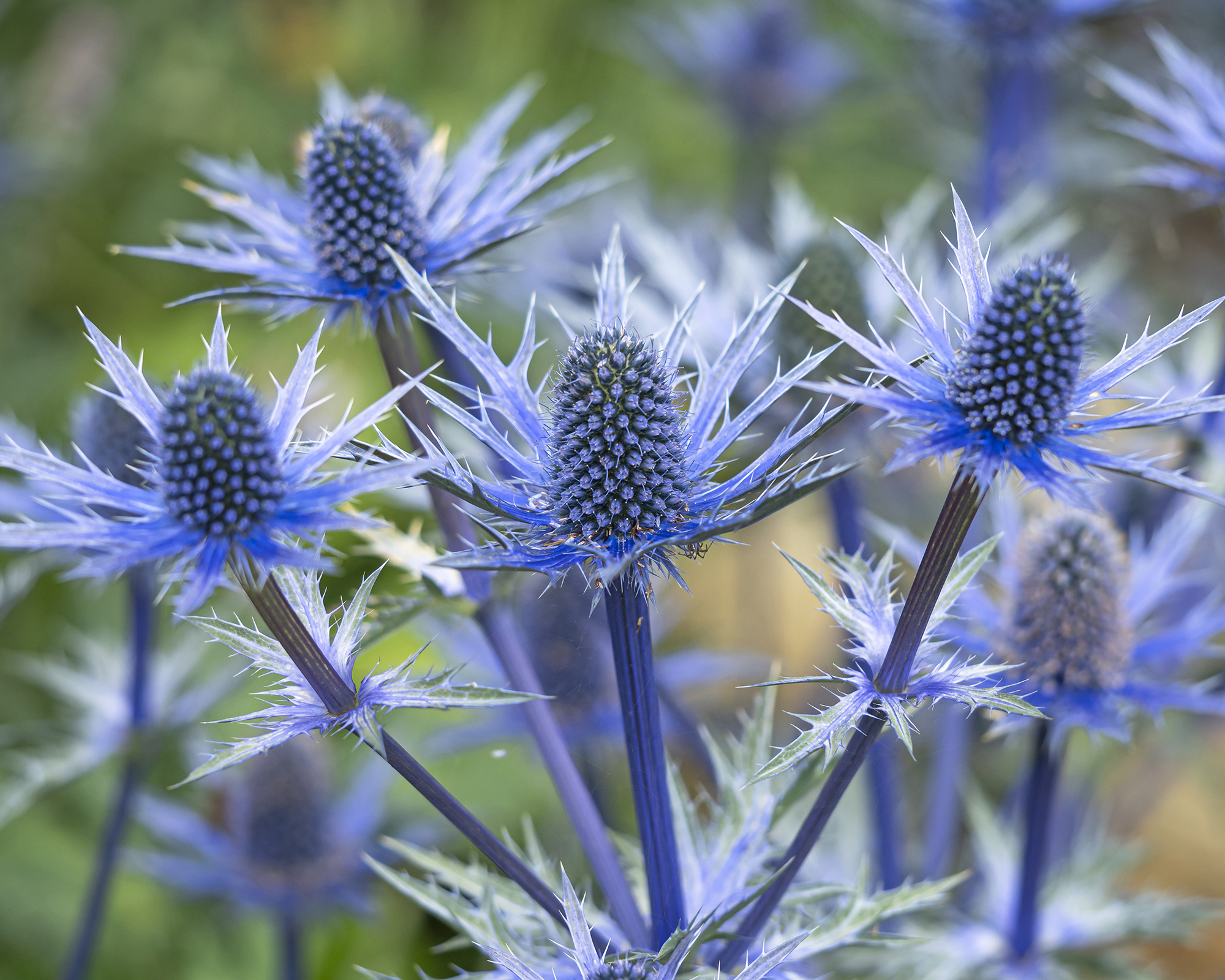
Sea holly – or eryngium – is a striking architectural flower that’s a draw for butterflies. Surrounded by spiky bracts, the blooms look stunning in floral arrangements and make lovely dried flowers.
The hardy perennial plants can withstand drought, winds, and sandy soils. Most sea hollies will thrive in USDA zones 4-9, while some varieties are suitable for zones 2 and 3.
Sea holly seeds are ideally planted in September. Direct sow into a full sun spot into moist soil with good drainage. They may not flower the first year, but require minimal care once established.
Avoid fertilizing, but water occasionally in dry periods. Deadhead spent sea holly flowers to extend the blooming season.
This article features products available from third-party vendors on the Gardening Know How Shop.

Melanie is an experienced gardener and has worked in homes and gardens media for over 20 years. She previously served as Editor on Period Living magazine, and worked for Homes & Gardens, Gardening Etc, Real Homes, and Homebuilding & Renovating. Melanie has spent the last few years transforming her own garden, which is constantly evolving as a work in progress. She is also a passionate organic home grower, having experimented with almost every type of vegetable at some point. In her home, Melanie tends to an extensive houseplant collection and is particularly fond of orchids.
